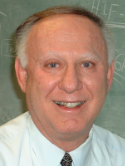| Abstract: |
To evaluate the efficiency of gene delivery in gene therapy strategies for malignant brain tumors, it is important to determine the distribution and magnitude of transgene expression in target tumor cells over time. Here, we assess the time- and vector dose-dependent kinetics of recombinant herpes simplex virus (HSV)-1 vector-mediated gene expression and vector replication in culture and in vivo by a recently developed radiotracer method for noninvasive imaging of gene expression (J. G. Tjuvajev et al., Cancer Res., 55: 6126-6132, 1995). The kinetics of viral infection of rat 9L gliosarcoma cells by the replication-conditional HSV-1 vector, hrR3, was studied by measuring the accumulation rate of 2-[14C]-fluoro-5-iodo-1-β-D-arabinofuranosyl-uracil (FIAU), a selective substrate for viral thymidine kinase (TK). The level of viral TK activity in 9L cells was monitored by the radiotracer assay to assess various vector doses and infection times, allowing vector replication and spread. In parallel, viral yields and levels of Escherichia coli β-galactosidase activity were assessed quantitatively. To study vector replication, spread and HSV-1-tk and lacZ gene coexpression in vivo, first- or second-generation recombinant HSV-1 vectors (hrR3 or MGH-1) were injected into s.c. growing rat 9L or human U87ΔEGFR gliomas in nude rats at various times (8 h to 8 days) and at various vector doses [1 × 106 to 2 × 109 plaque-forming units (PFUs)] prior to imaging. For noninvasive assessment of HSV-1-tk gene expression (124I-labeled FIAU % dose/g), 0.15 mCi of 124I-labeled FIAU was injected i.v. 8 h after the last vector administration, and FIAU positron emission tomography (PET) was performed 48 h later. For the assessment of HSV-1-tk and lacZ gene coexpression, 0.2 mCi of 131I-labeled FIAU was injected i.v. 24 h after the last vector administration. Forty-eight h later, animals were killed, and tumors were dissected for quantitative autoradiographical and histochemical assessment of regional distribution of radioactivity (TK expression measured as 131I-labeled FIAU % dose/g) and coexpressed lacZ gene activity. The rates of FIAU accumulation (Ki) in hrR3-infected 9L cells in culture, which reflect the levels of HSV-1-tk gene expression, ranged between 0.12 and 3.4 ml/g/min. They increased in a vector dose- and infection time-dependent manner and correlated with the virus yield (PFUs/ml), where the PFUs:Ki ratios remained relatively constant over time. Moreover, a linear relationship was observed between lacZ gene expression and FIAU accumulation 5-40 h after infection of 9L cells with a multiplicity of infection of 1.5. At later times (>52 h postinjection), high vector doses (multiplicity of infection, 1.5) led to a decrease of FIAU accumulation rates, viral yield, and cell pellet weights, indicating vector-mediated cell toxicity. Various levels of HSV-1-tk gene expression could be assessed by FIAU-PET after in vivo infection of s.c. tumors. The levels of FIAU accumulation were comparatively low (∼ ranging from 0.00013 to 0.003% injected dose/g) and were spatially localized; this may reflect viral-induced cytolysis of infected tumor cells and limited lateral spread of the virus. Image coregistration of tumor histology, HSV-1-tk related radioactivity (assessed by autoradiography), and lacZ gene expression (assessed by β-galactosidase staining) demonstrated a characteristic pattern of gene expression around the injection sites. A rim of lacZ gene expression immediately adjacent to necrotic tumor areas was observed, and this zone was surrounded by a narrow band of HSV-1-tk-related radioactivity, primarily in viable-appearing tumor tissue. These results demonstrate that recombinant HSV-1 vector-mediated HSV-1-tk gene expression can be monitored noninvasively by PET, where the areas of FIAU-derived radioactivity identify the viable portion of infected tumor tissue that retains FIAU accumulation ability, and that the accumulation rate of FIAU in culture, Ki, reflects the number of HSV-1 viral particles in the infected tumor cell po ulation [4.1 ± 0.6 × 106 PFUs/Ki unit (PFUs ÷ ml/min/g)]. Moreover, time-dependent and spatial relationships of HSV-1-tk and lacZ gene coexpression in culture and in vivo indicate the potential for indirect in vivo imaging of therapeutic gene expression in tumor tissue infected with any recombinant HSV-1 vector where a therapeutic gene is substituted for the lacZ gene. |






